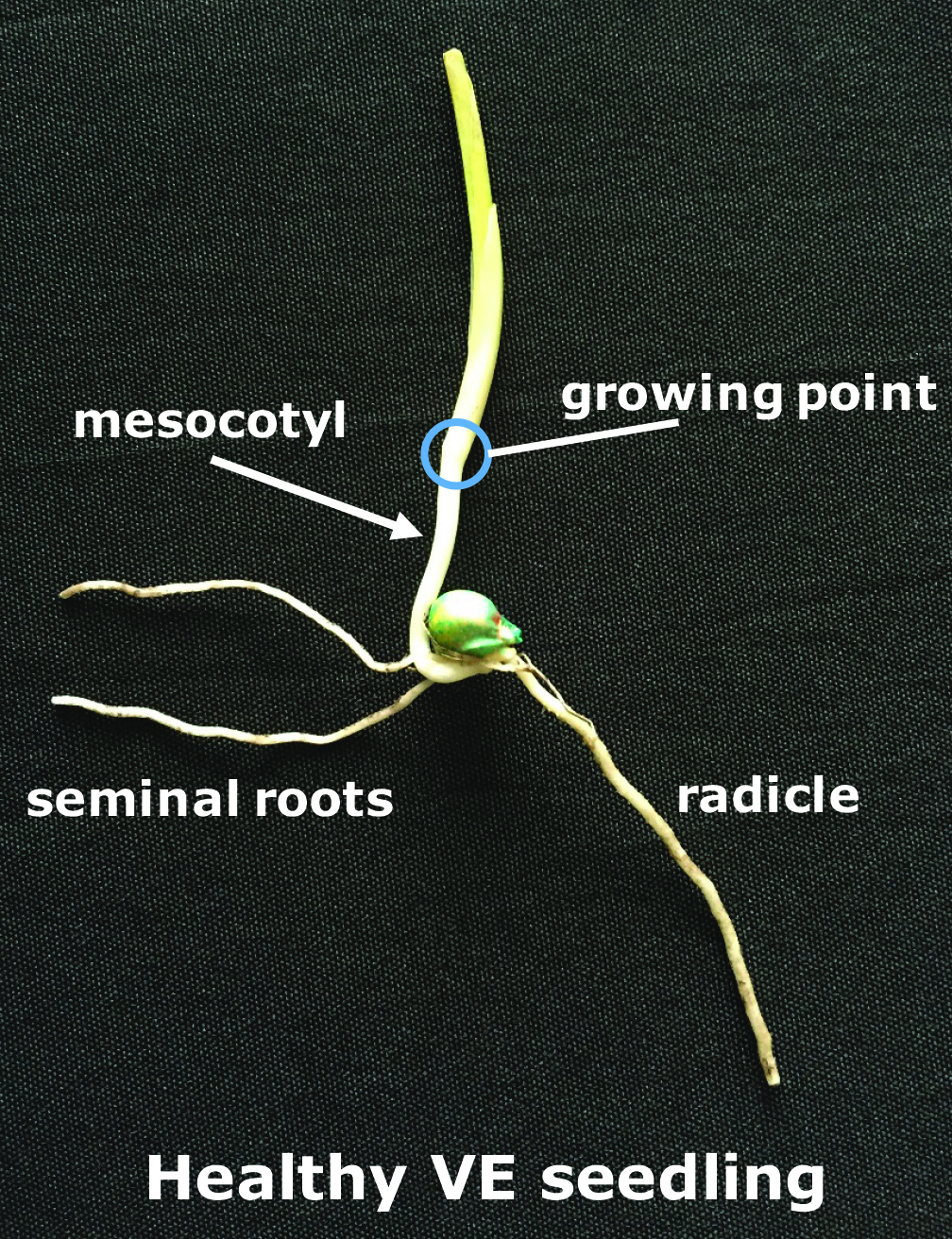SATURATED SOILS AND EARLY SEASON COLD STRESS
Excessive precipitation and cold temperatures can raise concern for newly planted or recently emerged corn seedlings. Timing of events and field conditions will have the greatest impact on any potential damage. Understanding the symptoms to look for and their effect on crop health will help you make management decisions to secure the greatest yield potential for your corn crop.
COLD STRESS DURING GERMINATION
One risk that newly planted corn faces is imbibitional chilling injury. This occurs when soil temperatures cool after planting and the kernels imbibe water and begin the germination process. The greatest risk of this occurs within the first 36 hours after planting, but there is risk of injury up until the seedling is emerged.
A seed will imbibe 30% of its weight in water before germination. When a kernel imbibes water it naturally expands. If cell tissue of the kernel is too cold it will be less elastic and more prone to rupturing. There is no definitive knowledge of what soil temperatures need to be for chilling injury to occur. It’s believed risk of injury starts at temperatures below 50°F and becomes more severe as soil temperatures drop.
Symptoms of injury include swollen kernels that fail to germinate, which will appear mushy and discolored. Chilling injury can also occur after germination. Symptoms that may appear after germination are: Stalled growth of the radicle root and coleoptile following germination. Stunting or death of the seminal root system. Deformed elongation of the mesocotyl, also known as corkscrew symptom. And delayed or complete failure of emergence, including leafing out underground.
Flooding and saturated soils
Even areas not completely flooded can become and remain saturated for days or weeks after heavy rains. Survival of corn plants in these scenarios is dependent upon temperature, stage of growth and length of time the soil is saturated. The important point to remember is there is no way to tell for sure if corn will survive until enough time has passed to assess recovery of affected plants. The following are some factors that increase the risk of damage or death.
- Completely submerged corn is at higher risk than partially submerged corn. Partially submerged plants may continue to photosynthesize at limited rates, extending the amount of time they can survive.
- Extended saturation will increase the risk of injury and death. Soil oxygen is depleted within about 48 hours of soil saturation. Without oxygen, nutrient and water uptake is impaired and root growth is reduced. A general belief is that young corn plants can survive up to 4 days of ponding if temperatures are in the mid-60s or cooler. With warmer temperatures the plants will use the available oxygen faster and likely will not be able to survive as long.
- Emerged corn younger than V6 is more susceptible to damage from flooding and saturated soils because the plant’s growing point is still below ground. Once water has subsided, the health of the growing point can be assessed by splitting the stem of an affected plant. A healthy growing point will be firm and white or yellow in color. A damaged or dead growing point will be soft and grey or brown in color.
- Surface crusts could form if water subsides and the soil dries quickly. This will obstruct air exchange into the root zone, making full recovery less likely.
- Extended periods of saturated soils will negatively affect the overall vigor of the plant. Root health and growth will be affected until the soil dries to normal levels. Poor root development will leave the corn plant more vulnerable to environmental factors later in the season.
- Wet soil conditions also promote the development of seedling blight diseases, especially Pythium. The highest risk of these diseases will be in poorly drained soils.

Deformed Mesocoyl Elongation. Photo courtsey of RL Nielsen, Purdue University.
Seedling disease
During a slow and challenging germination period, seed and seedlings are much more vulnerable to seedling blight pathogens. Soil temperatures below 55° F will delay germination and possibly weaken corn seedlings. Some seedling blight pathogens require abundant water to inoculate seedlings, so the combination of saturated soils and cool temperatures is a favorable environment for seedling diseases to develop. Seedling blights will cause tissue to become brown and rotten.

Assessment and Management
It’s best to wait about five days after saturated conditions or flooding to fully assess your crop. It’s likely no field work can be done during that time, and it will allow corn plants time to show signs of recovery. On plants that haven’t yet emerged, examine all underground seedling tissue and ensure that it’s healthy. Healthy tissue is white and firm to the touch. A healthy, germinated kernel will be somewhat soft but shouldn’t be brown and mushy.
On emerged plants it’s important to examine the growing point, which is the swollen area above the mesocotyl but below the soil surface. Carefully split the growing point and look for firm and white or yellow healthy tissue throughout. The mesocotyl is the life line between the seed roots, kernel and growing point, so a shriveled or damaged mesocotyl before the establishment of the nodal roots often results in unproductive or dead plants.
After enough time has passed, you can properly assess the stand of healthy corn plants, which will help inform you whether replant is necessary. As with any replant situation, it’s best to use a formula that takes into account targeted stand, actual stand and possible replant date to evaluate whether replanting would in fact be more profitable than leaving the current stand. To assist with replant decisions, refer to the Wyffels Between the Rows on replant.
Summary
The full extent of damage from cold stress and saturated soils cannot be seen until the corn plant has a chance to recover. Knowing which factors affect damage and survivability, and what signs to look for when assessing plant health will help you make the best decision for the long-term success of your corn crop.
